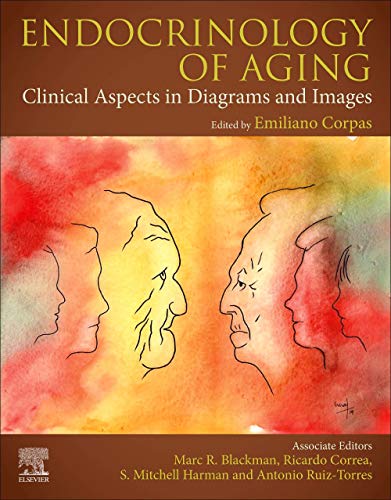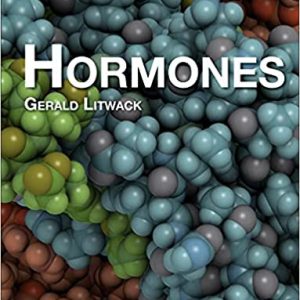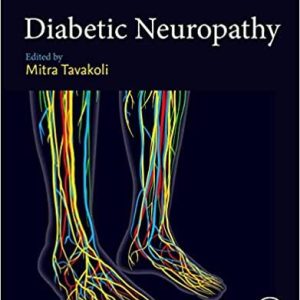Descripción
Endocrinology of Aging: Clinical Aspects in Diagrams and Images presents chapters in a way that allows the reader to incorporate concepts and main facts of complex subjects in a visual way. As the global population becomes older, the need for a deeper understanding of geriatric pathology increases, and with it, the access to educational resources for the endocrinology and metabolism of aging.
According to the United Nations, the number of people aged 60 years or over in the world is projected to be 1.4 billion in 2030 and 2.1 billion in 2050. Endocrinologists and other clinicians face the challenge of caring for the elderly. To do so, they need to incorporate geriatric principles into their clinical practice.
Review
«This book is a product of love and loving labor, a product of pathos, ethos, and pragma. It is beautifully written and logically integrated, a well-constructed presentation of distilled robust knowledge. It offers detailed and yet synoptic and occasionally epigrammatic well-vetted information. The book is full of outstanding pictures and diagrams, both historical and contemporary, that allow better understanding of an important period of human life. This volume covers beautifully a subject that is little discussed, despite its current and rapidly increasing socioeconomic importance. It is a leap forward.This book is a must read. It should be part of university curricula. Kudos to the editor, associate editors, and authors for a job greatly done! In the last century, improved nutrition, the development of new diagnostic technologies, and the discovery of many antibiotics and drugs to treat endocrine and metabolic disorders have prolonged longevity. This didactic text will not only help physician specialists in geriatric medicine, but also endocrinologists, gynecologists, and physicians in practice.» — George P. Chrousos, MD, MACP, MACE, FRCP. Professor of Pediatrics and Endocrinology Emeritus, University of Athens School of Medicine, Greece. UNESCO Chair on Adolescent Health Care.
«In their excellent book, Corpas et al. have summarized the most current evidence on the aging process in the endocrine system and its clinical impact on older persons. Organized in short and beautifully illustrated chapters, the coauthors describe the typical characteristics of normal aging and disease of each of the endocrine system components. (…). Reading this book was a delightful learning experience. I invite my colleagues from multiple disciplines and at any stage of their careers to use this book as your primary source of information in the field and as a teaching tool for your students and trainees.» — Gustavo Duque, MD, PhD, FRACP, FGSA. Chair of Medicine and Director of the Australian Institute for Musculoskeletal Science (AIMSS), The University of Melbourne and Western Health, Australia.
«To the best of my knowledge this is the first updated Textbook of Endocrinology of Elderly subjects. Human Development undergoes biological changes throughout life, each period with its characteristics. Lately endocrinology of the transition/period between adolescence and adult age has received much attention, not so the transition from middle age to aging. The text is written by internationally known experts in the field. It is divided into 20 chapters starting with physiological and nutritional aspects of aging followed by specific endocrine diseases in old age. Each chapter contains many didactic tables and figures in color of excellent reproduction and many references. The description of the various endocrine disorders is followed by a discussion of the therapeutic approaches. In the last century, improved nutrition, the development of new diagnostic technologies, antibiotics and many drugs to treat endocrine and metabolic disorder have prolonged longevity. This didactic text will not only help physicians & specialists in geriatric medicine, but also to endocrinologists, gynecologists and physicians in practice.» — Prof. (Emeritus) Zvi Laron MD PhD (hc). Director, Endocrinology and Diabetes Research Unit, Tel Aviv University, Israel.
«The endocrine system is constituted by multiple organs that are in constant communication. The integrity of this system is pivotal to the maintenance of body function and homeostasis. Aging affects the endocrine system as a whole, though at a variable pace and impact. Besides, several diseases of the endocrine system show the typical features of aging. For example, diabetes mellitus has long been recognized as a cause of accelerated aging in various organs and systems. Another typical example is hypothyroidism, whose clinical manifestations mimic the distinctive features of the aging process. Interestingly, endocrine pathologies such as normocalcemic hyperparathyroidism are being reconsidered from an asymptomatic condition to a symptomatic one after recognizing that high parathyroid hormone levels in older persons affect their gait and balance, thus providing a completely new understanding of this condition. In their excellent book, Corpas et al. have summarized the most current evidence on the aging process in the endocrine system and its clinical impact on older persons. Organized in short and beautifully illustrated chapters, the coauthors describe the typical characteristics of normal aging and disease of each of the endocrine system components. The evidence is well balanced and comprehensively reviewed and summarized. By providing practical tips, guidelines and diagnostic and therapeutic pathways, the authors facilitate translating the evidence into clinical practice. Those practical elements are beneficial not only to other specialists but also to general practitioners. In addition, the illustrations are very representative of the clinical findings of endocrine diseases, facilitating their identification in real life. Reading this book was a delightful learning experience. I invite my colleagues from multiple disciplines and at any stage of their careers to use this book as your primary source of information in the field and as a teaching tool for your students and trainees. The field of Geriatric Medicine needs specialized books like this one. Our specialty is growing, and we are in constant need of sources of balanced and reliable evidence. Corpas et al. have outstandingly fulfilled this gap by presenting this exciting book.» –Gustavo Duque, MD, PhD, FRACP, FGSA, Chair of Medicine and Director of the Australian Institute for Musculoskeletal Science (AIMSS), The University of Melbourne and Western Health, Melbourne, Australia
«The language of science can be challenging to understand at times. It is an art to present highly complex material in a clear, comprehensive, and compelling form. So when I came across “Endocrinology of Aging: Clinical Aspects in Diagrams and Images, edited by Professor Emiliano Corpas and over 30 experts from Spain and the USA who managed to do precisely that, I celebrated. The book represents a novel contribution to the biological and pathophysiological foundations of the aging of the different endocrine and metabolic systems. Well done! » –LinkedIn-Dr. Belén Garijo
Review
Explains the characteristic pathological expressions of hormonal alterations with advancing age and their relation to endocrine diseases





Valoraciones
No hay valoraciones aún.